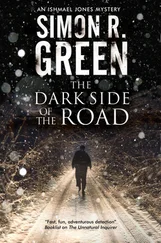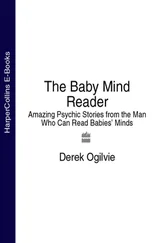You all know that a simple outline doodle by Picasso or a nude by Rodin or Klimt can be much more evocative than a full colour photo of a woman. Similarly the cartoon-like outline drawings of bulls in the Lascaux Caves are much more powerful and evocative of the animal than a National Geographic photograph of a bull. Hence the famous aphorism in art: "Less is more".
But why should this be so? Isn't it the exact opposite of the first law, the idea of hyperbole, of trying to excite as many "AHAs" as possible? A pinup or a Page Three girl after all has much more information. It's going to excite many more areas in your brain, many more neurons, so why isn't it more beautiful?
The way out of this paradox is to consider another visual phenomenon, called Attention. It's a well-known fact that you can't have two overlapping patterns of neural activity simultaneously. Even though you've got one hundred billion nerve cells, you can't have two overlapping patterns. In other words, there is a bottleneck of attention. You can only allocate your attentional resources to one thing at a time.
Well when you look at a Page Three girl, the main information about her sinuous soft contours is conveyed by her outline. Her skin tone, hair colour after all is no different from anyone sitting here. It's irrelevant to her beauty as a nude. So in the realistic photo you have all this irrelevant information cluttering the picture and distracting your attention away from where it's needed critically - to her contours and outlines. By leaving all this out in a doodle or sketch the artist is saving your brain a lot of trouble. And this is especially true if the artist has also added some peak shifts to the outline to create an "ultra nude" or a "super nude".
What's the evidence for all this? Of course you can test it by doing brain imaging experiments comparing neural responses to outline sketches and caricatures versus full-colour photos. But there's also very striking neurological evidence from children with autism. Some of these children have what's called the savant syndrome. Even though they are retarded in many respects, they have one preserved island of extraordinary talent.
For example, a seven-year-old autistic child Nadia had exceptional artistic skills. She was quite retarded mentally, could barely talk, yet she could produce the most amazing drawings of horses and roosters and other animals. A horse drawn by Nadia would almost leap out at you from the canvas. Contrast this with the lifeless, two-dimensional, tadpole-like sketches drawn by most normal eight or nine-year-olds - or even normal adults.
So we have another paradox. How can this retarded child produce a drawing that is so incredibly beautiful? The answer, I maintain, is the principle of isolation.
In Nadia perhaps many or even most of her brain modules are damaged because of her autism, but there is a spared island of cortical tissue in the right parietal. So her brain spontaneously allocates all her attentional resources to the one module that's still functioning, her right parietal. Now it turns out that the right parietal is the part of your brain that's concerned with your sense of artistic proportion. We know this because when it's damaged in stroke, for example, in an adult, you lose your artistic sense. You produce drawings that are often excessively detailed but lack the vital essence of the picture you're trying to depict. You lose your sense of artistic proportion. Conversely, since everything else is damaged in Nadia's brain she allocates all her attention to this brain module - so she has a hyper-functioning art module in her brain. Hence the beautiful renderings of horses and roosters.
Another example, equally striking. Dr Miller, University of California, has studied patients who start developing rapidly progressing dementia in middle age, a form of dementia called the fronto-temporal dementia, affecting frontal lobes and temporal lobes, but sparing the parietal lobe. And guess what happens. These patients suddenly start producing the most amazingly beautiful paintings and drawings - not all of them but some of them - even though they had never had any artistic talent before the onset of their dementia. Again, it's the isolation principle at work. With all other modules in the brain not working the patient develops a hyper-functioning right parietal. There are even reports from Alan Snyder in Australia that you can temporarily paralyze parts of the brain in normal volunteers - all of us less gifted people here. Imagine just zapping bits of your brain and unleashing hidden talents. If that happens, it will truly be a brave new world.
We don't have time to talk about all my other laws in detail. But I'll just mention the last law on my list - and in many ways the most important, yet the most elusive: Visual Metaphor. You all know what a metaphor is in literature as when you say it's the East and Juliet is the sun. But you can do the same thing in visual art - both in Western art and in Indian art. For example, when you look at the Chola bronze of the dancing Shiva or Nataraja with multiple arms you are not meant to take the multiple arms literally or call it a multi-armed monstrosity like the Victorian art critic, Sir George Birdwood, did. Funnily enough he didn't think that angels sprouting wings were monstrosities - although I can tell you as a medical man you can have multiple arms, but wings on scapulae are anatomically impossible!
The multiple arms are meant to symbolize multiple divine attributes of God and the ring of fire that Nataraja dances in - indeed his dance itself - is a metaphor of the dance of the Cosmos and of the cyclical nature of creation and destruction, an idea championed by the late Fred Hoyle. Most great works or art - be it Western or Indian - are pregnant with metaphor and have many layers of meaning.
Everyone knows that metaphors are important yet we have no idea why. Why not just say: "Juliet is radiant and warm" instead of saying: "Juliet is the sun"? What is the neural basis for metaphor? We don't know but I'll have a stab at this question next week in my Oxford lecture on synesthesia.
With that I conclude my lecture on Neuro-aesthetics. Have we understood the neural basis of art? Of course not. We have barely scratched the surface. But I hope the "laws of art" I've discussed might give you some hints about the general form of a future theory of art.
The solution to the problem of aesthetics, I believe, lies in a more thorough understanding of the connections between the 30 visual centres in your brain and the emotional limbic structures. And once we have achieved a clear understanding of these connections, we will be closer to bridging the huge gulf that separates C.P. Snow's two cultures - science on the one hand and Arts, philosophy and humanities on the other.
We could be at the dawning of a new age where specialisation becomes old-fashioned and a new 21st century version of the Renaissance man is born.
Lecture 4: Purple Numbers and Sharp Cheese
In the 19th century, the Victorian scientist Francis Galton, who was a cousin of Charles Darwin, noticed something very peculiar. He found that certain people in the normal population who were otherwise perfectly normal had a certain peculiarity and that is every time they heard a specific tone, they would experience a specific colour. For example, C sharp might be red, F sharp might be blue, another tone might be indigo. And this curious mingling of the senses was called synesthesia. Some of these people also see colours when they see numbers. Every time they see a black and white number like the number five printed on a white page, or a white five on a black page for that matter, they would see it tinged red so five might be red, six would be green, seven would be indigo, eight would be yellow and so on and so forth. Galton also pointed out this condition runs in families and more recently Simon Baron Cohen in Cambridge has confirmed this, that it does indeed run in families.
Читать дальше











![John Bruce - The Lettsomian Lectures on Diseases and Disorders of the Heart and Arteries in Middle and Advanced Life [1900-1901]](/books/749387/john-bruce-the-lettsomian-lectures-on-diseases-and-disorders-of-the-heart-and-arteries-in-middle-and-advanced-life-1900-1901-thumb.webp)
